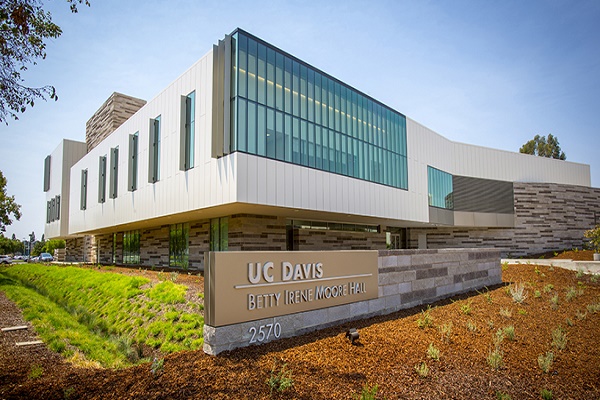University of California, Davis Plays Role in Historic Artemis I Mission
On Dec. 11, Artemis I’s Orion capsule made a successful splashdown in the Pacific Ocean after nearly 26 days in space and orbiting the moon. Orion is NASA’s new exploration spacecraft designed to carry humans into deep space.
The McClellan Nuclear Research Center (MNRC) at the University of California, Davis played an important role in the success of the historic moon mission.
The MNRC is a one-of-a-kind facility in the world with unique capabilities to conduct non-destructive testing using neutron radiography. For the Artemis I mission, one of the tests that NASA performed at the center was neutron imaging of the pyrotechnic devices known as “frangible rings” — responsible for stage separation of a rocket — to make sure they work effectively during critical moments of flight.
“The UC Davis reactor is literally the only place on earth where NASA can image these critical pieces due to the very limited number of neutron-based imaging facilities and the size of these pieces,” said Wesley Frey, director of MNRC. “Safe manned flight into space is dependent on this facility.”
Neutron radiography in rocket safety
Most heavy-lift rockets contain millions of complex components that need thorough testing and stringent quality control with very low projected failure rates. But such rockets are also filled with fuel that makes up eighty to ninety percent of their mass, leaving almost no room for redundant safety systems.
“It is imperative that systems must work when they should, but also that they not be deployed before they are intended to function,” said MNRC Research & Development Engineer Sandra Warren.
In such a scenario, non-destructive testing is the only way to perform a comprehensive inspection of these critical components. Neutron radiography is the only tool that can image low atomic number materials, such as water and pyrotechnics, when they are surrounded by metal casings in order to make sure that the components have all been assembled correctly. It is a technique similar to X-ray radiography, but provides vastly superior image contrast in these specific applications.
“Neutron radiography is a wonderful method, especially for aerospace, because so many things are explosive devices,” said Warren. She added that explosives, when manufactured properly, have a reliability that far exceeds electrical wires.
“In space, there’s a lot of vibration, G-forces, electricity issues, wires breaking, etc., but explosives will always work in a reliable manner, even when they don’t have oxygen.”
NASA pyrotechnic devices vary in size from really small initiators to start engines, to parachute deploying systems, to very large stage separation systems. In Artemis I, a gold-colored band, about a half-a-foot tall and over 20 feet in diameter, goes around the rocket, providing the final separation between the lower stages of the rocket and the actual Orion capsule where the crew is going to live in.
“That’s one of the things we image here,” said Frey.
Frey said that transitioning from using explosive bolts to these frangible rings has benefits for heavy rockets: It’ll keep space a little less polluted as the frangible rings, unlike explosive bolts, produce no hazardous space debris.
“That’s probably the most interesting thing that we’ve done for the space launch system, though dozens of flight critical items on the SLS rocket are tested at the facility,” said Frey. The facility has already completed testing for Artemis II components and is now testing components for Artemis III, which will return humans to the surface of the moon.
“NASA is interested in transitioning all heavy lift rockets to use frangible rings technology, and for that to happen they need our UC Davis reactor to do the final inspection on all of them, because there’s literally no other place to do them,” Frey said.
This transition became more likely during the Artemis 1 mission when after a four-year effort, on November 21, the U.S. Nuclear Regulatory Commission issued a renewed 20-year operating license to the facility.
The MNRC offers world-class irradiation services and neutron radiography that are particularly well suited for applications in material science, electrical engineering, plant science, geology, chemistry and physics.
The center is located in Sacramento, 25 miles from the UC Davis campus. The facility was originally built and commissioned by the U.S. Air Force for the primary purpose of detecting low-level corrosion and hidden defects in aircraft structures using non-destructive testing techniques such as neutron radiography and tomography.

